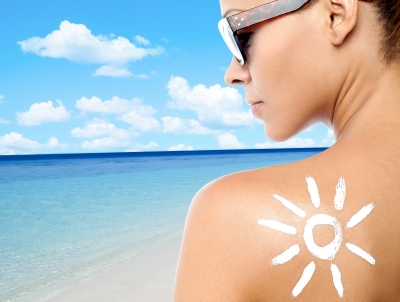|
Do you ever wonder if it's the best idea to regularly slather sunscreen (that contains chemicals like Parsol, Escalol, and Mexoryl) all over your body? Here's your guide to healthy sun exposure this summer! First, a few interesting sun facts. Did you know that:
In general, it's important to strike a balance between: 1) healthy sun exposure, 2) covering up, and 3) applying sunscreen. You need some unprotected sun exposure in order for your body to produce and store vitamin D. The lighter your skin is, the faster you produce vitamin D. Some research suggests that you may need as little as ten minutes twice a week of unprotected sun exposure, but this is probably on the low side. There are rising concerns about negative health effects of chemical sunscreens. If you can cover up, why not do that instead? If you can't cover up, or don't want to, then consider choosing a sunscreen that contains a 'physical block' of the sun. This means the sunscreen actually gets in the way of the rays of the sun, generally with the ingredients 'zinc oxide' or 'titanium dioxide.' These ingredients are found in natural sunscreens and children's sunscreens. The physical block sunscreens can leave a slight white residue on the skin. You can check out the details of most sunscreens through the Environmental Working Group database (www.ewg.org/skindeep). In terms of what is readily available in North Bay, I recommend the the Badger line of mineral sunscreens (which has a good safety rating and is available at health food stores). I recommend avoiding spray on sunscreens, primarily because it is difficult to ensure that enough has been applied evenly. If you're traveling and/or shopping online, here's a list of some great products. Manufacturers have recently started 'micronizing' the titanium dioxide and zinc oxide (making them smaller) so that they appear transparent to the naked eye, but still effectively block out the sun. If a particle is micronized enough it becomes a 'nanoparticle.' There is some concern that nanoparticles may pass through the skin into the body, with possible negative long-term health consequences, but there hasn't been enough research on this topic to know for sure. Badger does not micronize their mineral ingredients. If you're using your sunscreen on babies, please note that zinc oxide has been approved by the FDA for infants six months and younger, whereas titanium dioxide has not. Also, there is some evidence that zinc oxide does a better job of scattering the rays of the sun away from your skin. However, just to confuse the issue, the Environmental Working Group gives titanium dioxide a better safety rating than zinc oxide. There is some concern that titanium dioxide is carcinogenic when inhaled. Armed with this information, you can get out there and safely enjoy the sun this summer! Image courtesy of stockimages at FreeDigitalPhotos.net
2 Comments
Roger Gagne
5/26/2016 05:10:38 am
Thanks D 😎❤️
Reply
Leave a Reply. |
AuthorDr. Dielle Raymond, ND Archives
March 2020
Categories |
This website is intended for educational purposes only. There are no contents on this website that are intended to provide medical advice, diagnosis, or treatment. Copyright ©2023 Dr. Dielle Raymond, ND. All Rights Reserved.


 RSS Feed
RSS Feed